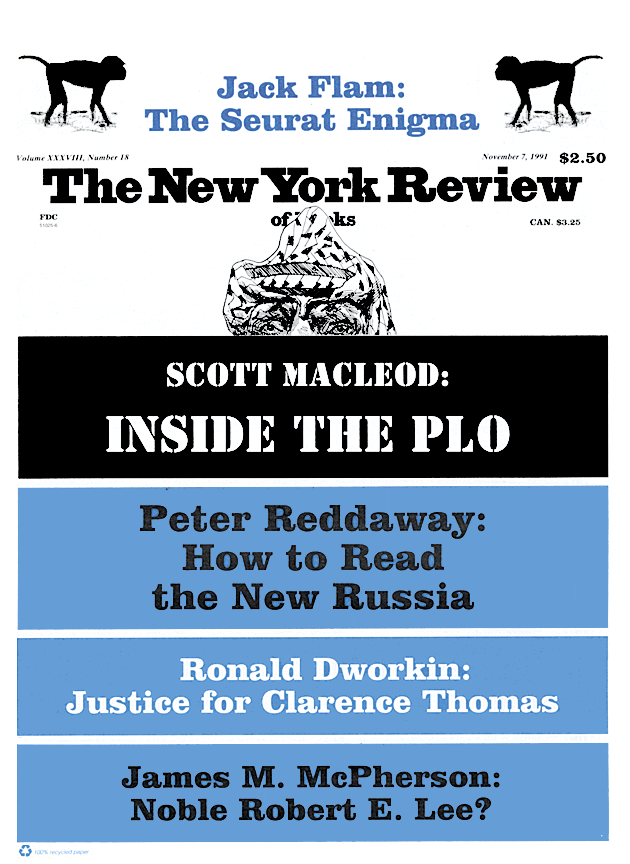In response to:
The Nuclear Threat: A Proposal from the June 27, 1991 issue
To the Editors:
In their excellent article, “The Nuclear Threat: A Proposal” [NYR, June 27], Hans Bethe, Kurt Gottfried, and Robert McNamara correctly note that it is the responsibility of the International Atomic Energy Agency (IAEA) to apply safeguards against the diversion for military purposes of nuclear materials in peaceful use. However, their subsequent statement: that the IAEA may only inspect “declared” facilities, not suspect sites, is arguable.
According to the model agreement which is used by the IAEA in negotiating safeguards agreements between the IAEA and states party to the Treaty on the Non-Proliferation of Nuclear Weapons (NPT), the IAEA has the authority to carry out special inspections if the information provided by its routine inspection of declared nuclear material is not adequate to fulfill its safeguards responsibilities. Since states party to the NPT have the obligation to declare all their nuclear material, a logical inference of the above is that the scope of such special inspections should include access to sites where undeclared nuclear material is suspected to exist.
Indeed, some safeguards experts have argued that the language on special inspections applies to undeclared facilities as well as materials. Under this interpretation, plants which are being built to, e.g., enrich uranium and reprocess spent fuel, as well as nuclear reactors under construction would be subject to special inspections if undeclared, even before nuclear materials are introduced into them. The same logic might also apply to factories which produce the components for such facilities, e.g., centrifuges for uranium enrichment.
Discussions about instituting such special inspections—although the authority may exist, it has never been exercised—took place at the NPT Review Conference last summer, and this issue was also raised by IAEA Director General Hans Blix to the Agency’s Board of Governors last February. This is not an academic matter, for UN Security Council Resolution 687 which seeks to destroy, remove, or render harmless all nuclear weapons-usable materials, components, and facilities in Iraq relies on the mechanism of special as well as routine inspections to carry out this task. To some degree, the—admittedly draconian—nature of Resolution 687 must be incorporated into standard IAEA safeguards practice if we are to avoid the problem of future Iraqs conducting clandestine nuclear weapons programs behind the fig leaf of nominal adherence to their NPT obligations.
Marvin M. Miller
Department of Nuclear Engineering
Massachusetts Institute of Technology
Cambridge, Massachusetts
This Issue
November 7, 1991


